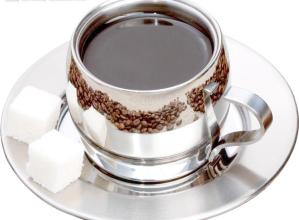Introduction to Fine Coffee from La Tisa Manor in Guatemala with its unique fragrant taste
From the 4th century to the 11th century, Pettenlow in Guatemala
Guatemala
Guatemala
The area is the center of the ancient Indian Mayan culture, and many pyramids and urban ruins left over from this period are still visible today. [7]
At the end of the 11th century, Mayan culture still existed in the central highlands after the Mayan culture in the lowlands of Guatemala was eliminated. [7]
In 1523, the Spaniards came to Guatemala, where they destroyed the local Mayan culture and began to colonize Guatemala. As a result of the annihilation policy of the Spanish colonists, almost all previous Mayan books were destroyed and only a few books were preserved. [7]
In 1524, Guatemala was completely colonized by Spain. [7]
In 1527, Spain set up a governor's palace in danger to govern Central America except Panama. [7]
On September 15, 1821, Guatemala was freed from Spanish colonial rule and declared its independence. [7]
Between 1822 and 1823, Guatemala became part of the Mexican empire. 1823
Mayan cultural sites in Guatemala
Mayan cultural sites in Guatemala
Guatemala joined the Union of Central America. [7]
After the disintegration of the Central American Union in 1838, it became an independent country again in 1839. [7] it was only in 1840 that Guatemala became fully independent. [7]
From 1841 to 1871, conservatives organized the government of Guatemala. They tried to slowly modernize the country's economy while preserving the hierarchy left over from the colonial era. [8] on March 21, 1847, Guatemala declared the establishment of a republic. [7]
From 1871 to 1944, the country began to devote itself to economic modernization. At the same time, the United Fruit Company, which is dominated by the United States, has also begun to buy large coffee and banana estates in Guatemala and intervene in Guatemalan politics. After the revolution in October 1944, the former dictator was overthrown, Guatemala implemented democracy and freedom of expression, and the first law in Guatemalan history to protect the interests of workers came into force. [7] Guatemala began the process of democratization
The coffee produced in the highland is mellow and has a good sour taste, which is well received and is the best material for mixed coffee.
Coffee varieties:
Arabica species (Arabica):
It accounts for 85% of total coffee production, including Brazil, Colombia, Guatemala, Ethiopia and so on. The beans are turquoise, thin and small, with special aroma and sweet acid, which is good to drink with other coffee. Excellent quality, more suitable for public taste.
Robada species (Robusta):
Roughly planted in Java, Indonesia, drought-resistant and insect-resistant; bitter taste, but bitter with fragrance, especially after cooling with a unique sweet taste, suitable for the preparation of cold coffee, mellow and extremely bitter.
Liberia plus species (Leberica):
The quantity of this variety is very small, most of it is used to synthesize coffee and make coffee essence, it is difficult to see in the market, the quality is not good, and the coffee beans in each producing area have their own characteristics, and they have won a lot of praise for Guatemala in the international community, especially Antigua, how perfectly coordinated its sour, sweet and mellow texture is. Add a hint of smoke and emphasize its mystery, and after tasting it, you will have a reason not to look for substitutes everywhere.
Guatemalan coffee beans are mostly cultivated in high-altitude volcanic soils belonging to the most advanced Arabica varieties. Due to the long ripening period, the beans are medium and dense (Guatemalan coffee beans are graded not on the basis of particle size, but on the basis of shortcomings), and the bean color is dark turquoise. The unique sour taste of fragrance, mellow, sweetness and freshness is characterized by the aroma and taste of coffee beans hidden in its sour taste. Therefore, coffee beans with this characteristic can be called first-class coffee beans. The name of the product is suitable for the taste characteristics of baking degree.

Important Notice :
前街咖啡 FrontStreet Coffee has moved to new addredd:
FrontStreet Coffee Address: 315,Donghua East Road,GuangZhou
Tel:020 38364473
- Prev

Full-bodied aroma of Indonesia Fuyin Manor Coffee Flavor characteristics of taste introduction of boutique coffee beans
In March 2014, Indonesian President Susilo Bambang Yudhoyono signed Presidential decision No. 12 of 2014, formally repealing Circular No. 6 of 1967 and renaming ** (cina) China. Circular No. 6 of 1967, a product of the era of former Indonesian President Suharto, contains discrimination and insult to the national dignity and personality of China and the Chinese. The local Chinese said that the discriminatory terms against China and Chinese for more than 40 years will be gone.
- Next

Introduction to the flavor and taste of coffee from Incht Manor, Guatemala, which is bitter and fragrant.
In 1954, Arbens was overthrown and Castillo Armas became the new dictator. The new government immediately invalidated all reforms. Enter the period of transition between the right-wing military government and the literati government. [1] in 1957, Armas was assassinated and his heir was a soldier who was already known for his bloodshed in the dictatorship of the 1940s. [7] in 1960, leftist military groups appeared in Guatemala
Related
- Does Rose Summer choose Blue, Green or Red? Detailed explanation of Rose Summer Coffee plots and Classification in Panamanian Jade Manor
- What is the difference between the origin, producing area, processing plant, cooperative and manor of coffee beans?
- How fine does the espresso powder fit? how to grind the espresso?
- Sca coffee roasting degree color card coffee roasting degree 8 roasting color values what do you mean?
- The practice of lattes: how to make lattes at home
- Introduction to Indonesian Fine Coffee beans-- Java Coffee producing area of Indonesian Arabica Coffee
- How much will the flavor of light and medium roasted rose summer be expressed? What baking level is rose summer suitable for?
- Introduction to the characteristics of washing, sun-drying or wet-planing coffee commonly used in Mantenin, Indonesia
- Price characteristics of Arabica Coffee Bean Starbucks introduction to Manning Coffee Bean Taste producing area Variety Manor
- What is the authentic Yega flavor? What are the flavor characteristics of the really excellent Yejasuffi coffee beans?

